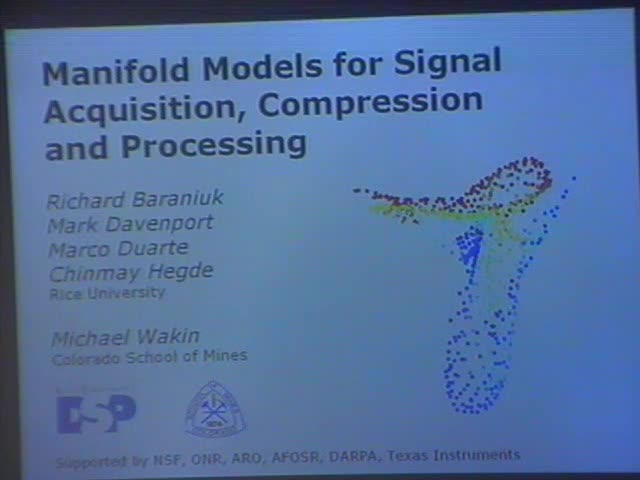Manifold models for signal acquisition, compression, and processing
Presenter
October 27, 2008
Keywords:
- manifolds model
MSC:
- 46-XX
Abstract
Joint work with Mark Davenport, Marco Duarte, Chinmay Hegde,
and Michael Wakin.
Compressive sensing is a new approach to data acquisition in which
sparse or compressible signals are digitized for processing not via
uniform sampling but via measurements using more general, even random,
test functions. In contrast with conventional wisdom, the new theory
asserts that one can combine "low-rate sampling" (dimensionality
reduction) with an optimization-based reconstruction process for
efficient and stable signal acquisition. While the growing
compressive sensing literature has focused on sparse or compressible
signal models, in this talk, we will explore the use of manifold
signal models. We will show that for signals that lie on a smooth
manifold, the number of measurements required for a stable
representation is proportional to the dimensionality of the manifold,
and only logarithmic in the ambient dimension — just as for sparse
signals. As an application, we consider learning and inference from
manifold-modeled data, such as detecting tumors in medical images,
classifying the type of vehicle in airborne surveillance, or
estimating the trajectory of an object in a video sequence. Specific
techniques we will overview include compressive approaches to the
matched filter (dubbed the "smashed filter"), intrinsic dimension
estimation for point clouds, and manifold learning algorithms. We
will also present a new approach based on the joint articulation
manifold (JAM) for compressive distributed learning, estimation, and
classification.
